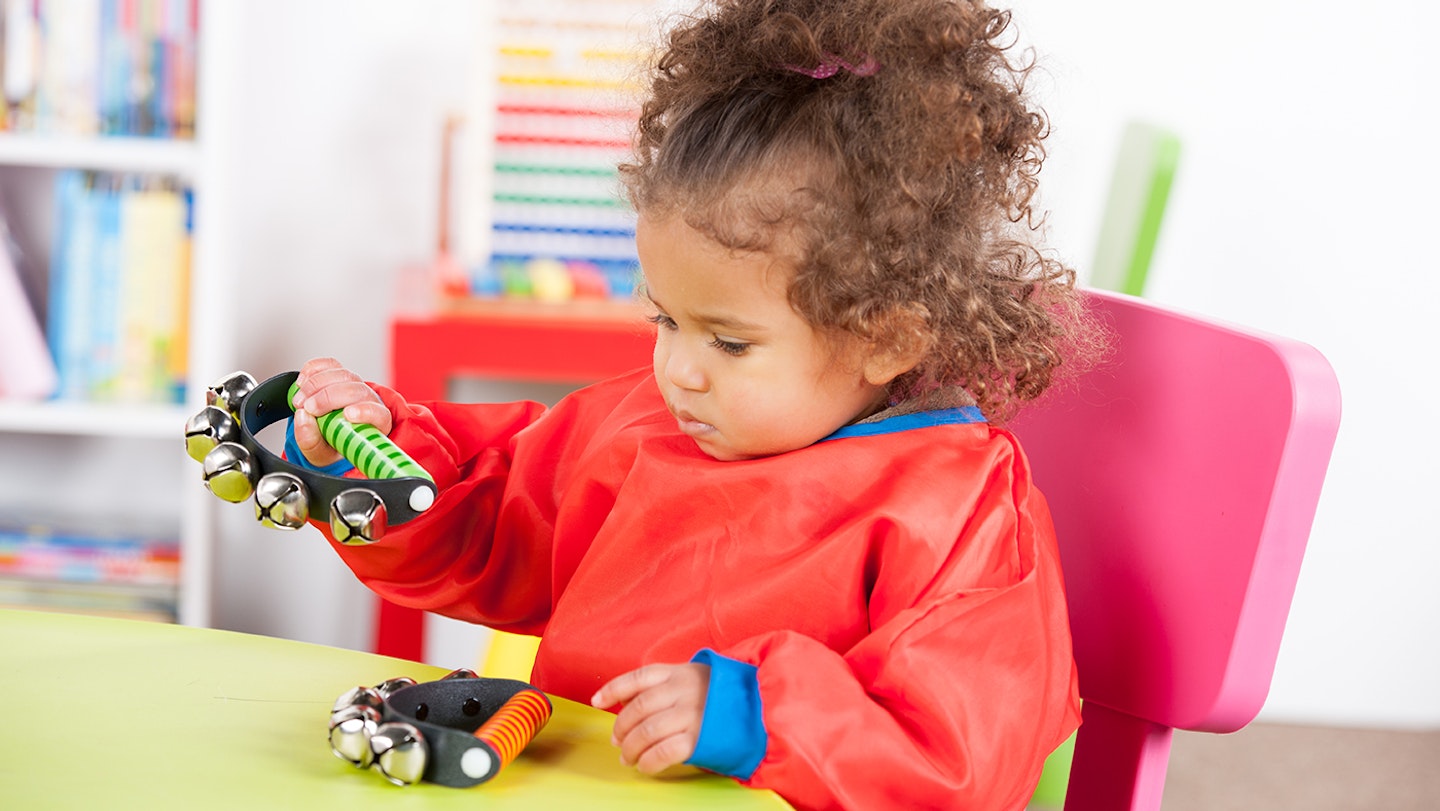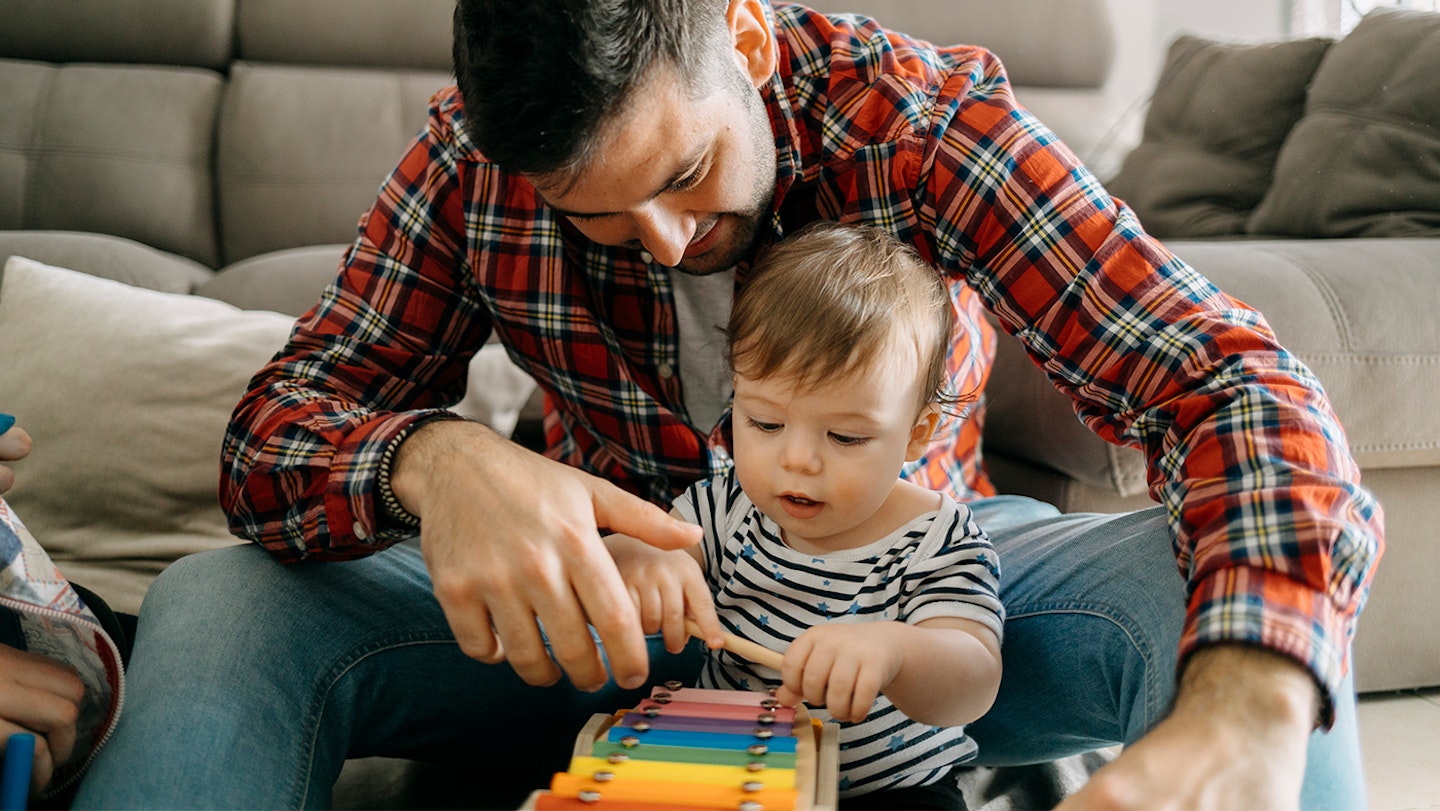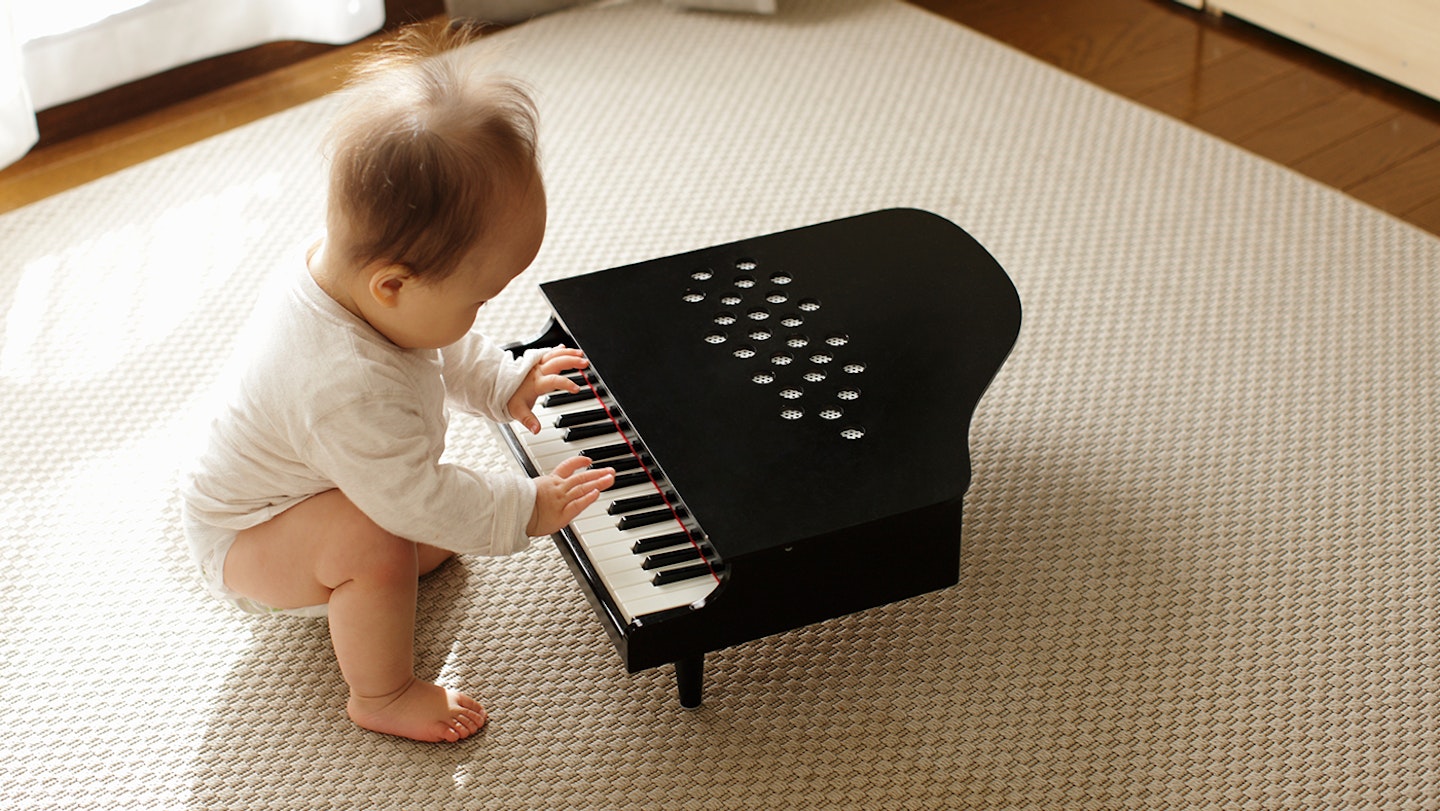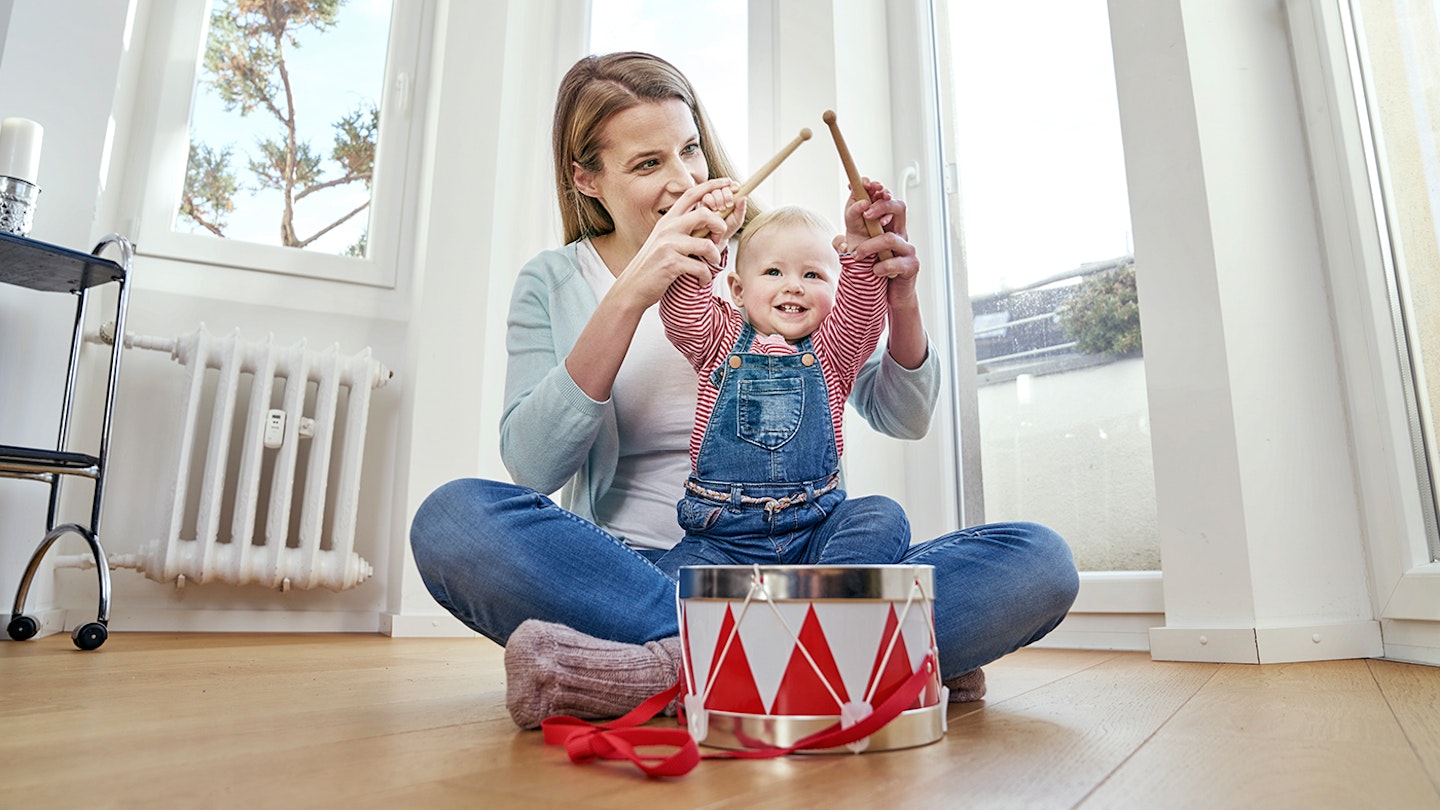While we appreciate that giving your baby a drum or tambourine may seem like utter madness - especially when you've had minimal sleep - the benefits of music toys are huge.
When should I introduce musical toys to my baby?
You can introduce musical toys to your baby right from birth. "Musical toys make lovely sensory stimulation, whether that's a toy that plays a soothing nighttime lullaby or a parent jingling a rattle in front of a baby," says Dr Amanda Gummer, founder of The Good Play Guide and child research psychologist. "I can highly recommend the Toniebox, a robust child-friendly speaker, for playing music to babies and toddlers. It's controlled by placing figurines on top of the speaker, which then plays songs and stories. This means that as your child gets older, they'll be able to choose their own songs, with no screens or fiddly buttons required."
The benefits of musical toys for babies and toddlers
Stimulating a baby's senses including vision, taste, touch, and sound helps their brain to grow. The wider the variety of pitch and rhythms you can expose your child to, the better. Repetition helps build the connections in their brain so they can recognise a range of sounds.
Babies develop their big muscles, known as gross motor skills, first. Playing with musical toys that require big movements, such as banging or shaking, helps to strengthen their arm muscles and coordination.

Fine motor skills are the little muscles of the body, such as those in the hands and mouth. Playing musical instruments that require holding a beater, like drums or xylophones, helps to improve a baby's handgrip and hand-eye coordination. Other musical toys such as whistles and trumpets can help improve control over their mouth and tongue muscles, which are important for speaking and eating.
Creativity
Listening to music introduces children to the wonderful variety of sounds they can create and encourages sensitivity to different tones. Musical instruments can help children express themselves in a non-verbal way, such as an angry banging of a drum or a light and cheery ringing of a bell.
Communication
Exposing children to different rhythms and pitches can help develop listening skills. The rhythm of music is also similar to language, so singing along to songs and rhymes can help children learn to speak too.

The best types of musical toys for children
"For children under around 12 months, chunky rattles that babies can hold with their whole hand are a great introduction to making music. For example, the Halilit Musical Rings or TOMY Shake & Sort Cupcakes are easy for little hands to hold and can make lots of different sounds," recommends Dr Gummer. "Babies like to explore with their mouths, so any toys need to be safe and durable enough to survive chewing!" Dr Gummer also recommends toy drums as they can make a satisfying bang noise with little coordination needed.
Tech toys that make sounds are also great for learning about cause and effect, as babies can learn that when they press a button, it creates sounds and sometimes lights and movement too.
"Our Good Toy Guide testers loved the Skip Hop Rock-a-Mole guitar, for instance, which is easy for little hands to hold and features a rolling avocado pit to really 'guac out'", says Dr Gummer. "The Fisher-Price® Dance & Move BeatBo for older babies also bops along to the music, encouraging little tots to dance with him."
"As babies get older and their dexterity improves, musical toys that require more coordination are great fun to explore and help strengthen their fine motor skills," Dr Gummer explains. "Instruments with beaters, like those in the Haba Rhythmic Set, encourage children to improve their grip and hand-eye coordination in order to beat the drum, hit the triangle, and so on." Pots, pans, and wooden spoons also work well!
Musical instruments like pianos need a lot more dexterity, so Dr Gummer suggests waiting until children are at least three years old.
"However, there are some great toys to get them started, such as the Hape Magic Touch Piano and the Discovery Play Piano Music Mat. These simply need a gentle touch to play. This also introduces toddlers to the idea that certain keys will create specific notes, and you can gradually start to show them how to play simple tunes."

Tips for helping children make the most of musical toys
Free play is great for sensory stimulation and free expression. "You could also encourage your child to copy a rhythm or tune, to promote listening skills," Dr Gummer suggests. "Start with just one or two beats or notes then increase them gradually. Giving your child a musical toy when singing a song together, or listening to music, means they can play along too. Children can also be prompted to explore how music makes them feel, for example, drawing a picture while they listen to a song and discussing the emotions they felt during it."
